Anecdotes
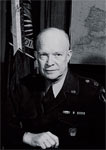
American general Dwight David Eisenhower was named Supreme Commander Allied Forces Europe (SACEUR) in December 1950. Eisenhower had lead the Allied armies in the Second World War and several of his key subordinate commanders served under him once again. In NATO’s earliest days, those who had won the war were given the task of securing the peace. Eisenhower stepped down as SACEUR on 31 May 1952, to launch his successful campaign for the American Presidency.
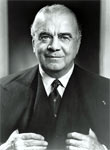
The title Secretary General was first used in the 1920s for the head of the League of Nations. It indicated an office and supporting staff who were loyal to an international organisation, rather than to any nation. The title was resurrected for the United Nations in 1945 and subsequently at NATO. Lord Ismay, Winston Churchill’s wartime Chief of Staff, became NATO’s first Secretary General in April 1952. Ismay’s roles and responsibilities were unclear when he arrived, but when he left in 1957 the office had assumed its most important current duty of chairing the North Atlantic Council.

Sixty Years of the North Atlantic Council
The first formal meeting of the North Atlantic Council occurred on 17 September 1949. It was held in the auditorium of the United States Department of State in Washington, DC, the same room where the North Atlantic Treaty had been adopted on 4 April 1949. The main purpose of the meeting was to establish an organizational structure for NATO, and at the start of the meeting the US Secretary of State, Mr. Dean Acheson, called for two principles to be observed: “the machinery should be as simple as possible and the organisation should not be multiplied merely for the purpose of setting up many committees….Secondly, the machinery should be businesslike and should reflect underlying realities.”
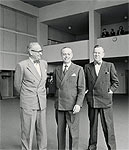
A NATO Science Programme was one of the proposals made in the 1956 Report of the Committee of Three, which identified scientific cooperation amongst member nations as a way of creating international partnerships and promoting security. A NATO Science Committee, composed of experts from member nations, first met in March 1958 to evaluate, oversee and fund the programme. In the ensuing half century, the focus of NATO-sponsored research has evolved from Cold War military issues to the “Challenges of Modern Society” like the environment, food supplies, terrorism and cyber security. Since the early 1990s, science has been a key component of NATO’s cooperative interactions with non-member countries.
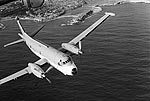
A Cooperative Production Programme was established in 1952 to produce major items of military equipment. One of its most important projects was launched in 1958 when the Armaments Committee issued specifications for a sea-reconnaissance and patrol aircraft. The Breguet 1150 Atlantique, which was built in France using components manufactured in several NATO countries, was chosen from amongst twenty-five submitted designs. The first prototype flew on the 21st of October 1961. The plane is used for anti-submarine and surface warfare, mine-laying and long-range surveillance, while also fulfilling peacetime search and rescue functions. The Breguet is an example of the many cooperative production endeavours that NATO has undertaken.
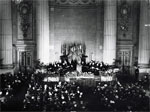
Soviet Request to Join NATO, 1954
Twelve countries signed the Washington Treaty in 1949 as a way of guaranteeing military and diplomatic links between Europe and North America and ensuring the freedom of Western Europe. The Alliance welcomed its first new members in the 1950s, with Greece and Turkey joining in 1952, while West Germany was soon slated to follow in 1955. It was against this background that the Soviet Union launched one of the Cold War’s more intriguing gambits, by asking to join NATO in 1954. The request tested the limits of NATO’s willingness to admit new members.
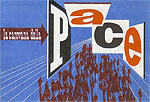
Travelling Exhibitions/Caravan of Peace
One of the earliest challenges faced by NATO was how to inform the public in member countries about the Alliance’s goals. Travelling exhibitions that combined texts and graphic material proved to be very effective and were soon an integral part of NATO public relations. One of the most successful ways that public awareness was raised in these years was with the Caravan of Peace, a large mobile exhibition that toured Italy, Greece, Turkey and France in 1953 and 1954.

























